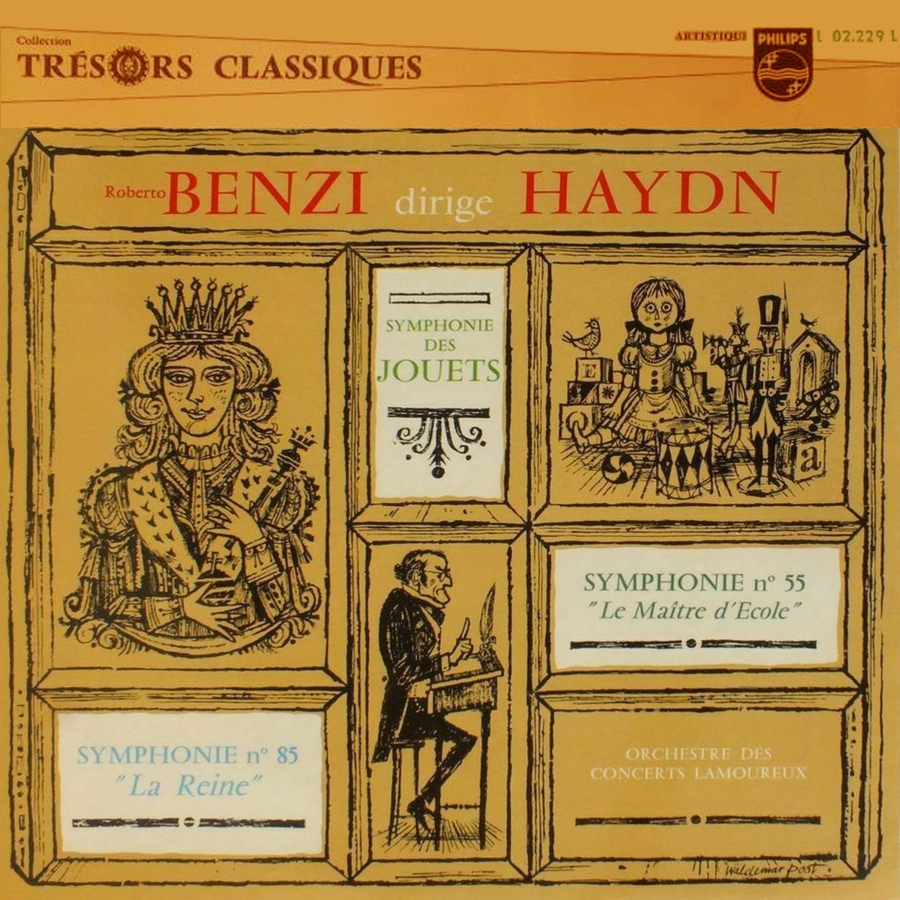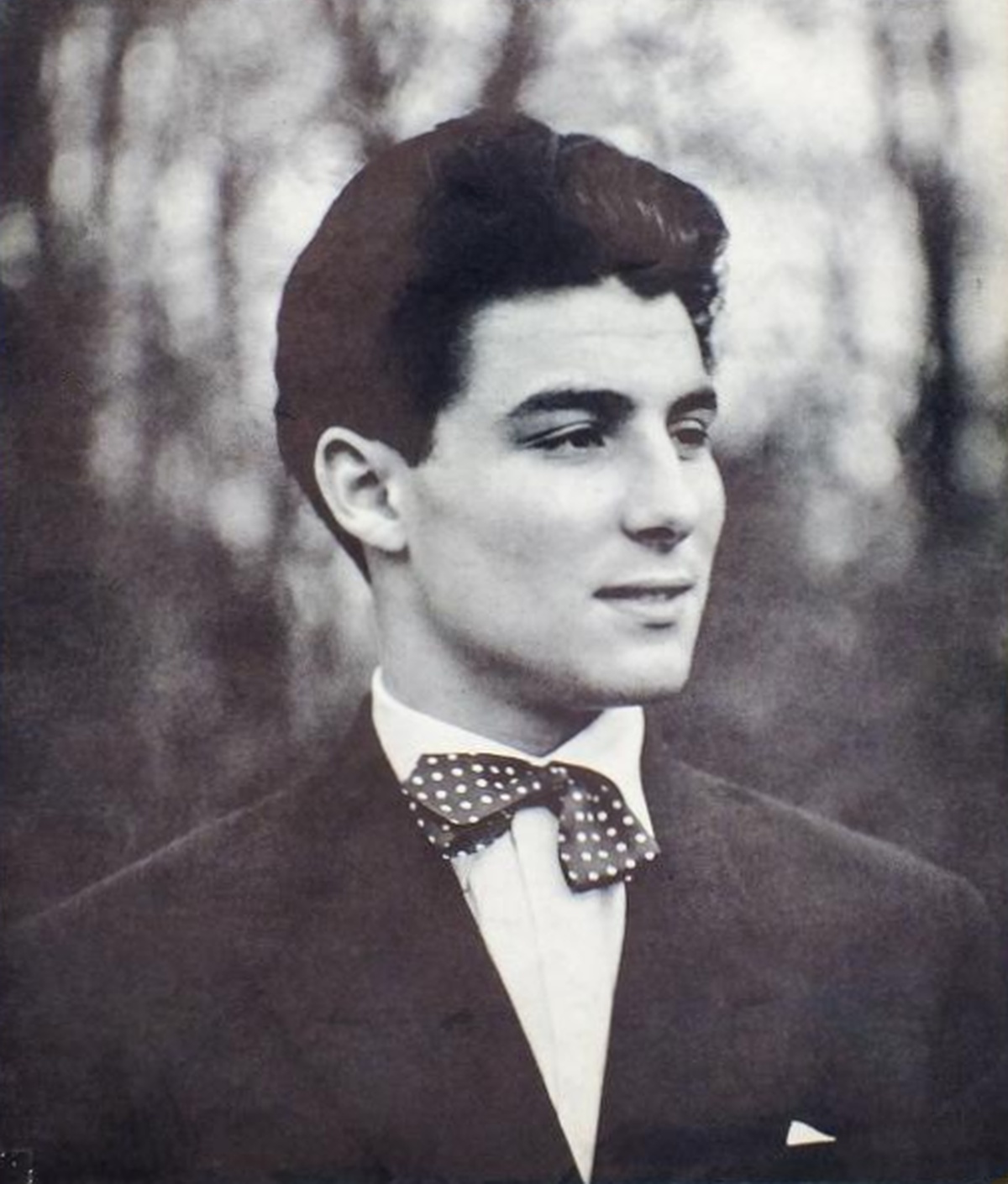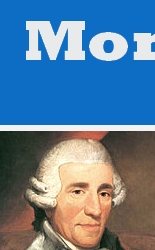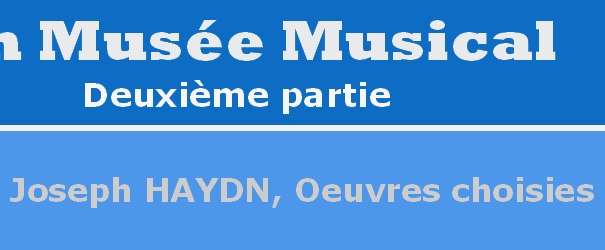Joseph HAYDN
Symphonie No 55 en mi bémol majeur
dite «Le Maître d'école»
Orchestre Lamoureux
Roberto BENZI
8 au 12 janvier 1962
Maison de la Mutualité, Paris
Joseph Haydn composa cette symphonie pour 2 hautbois, 2 bassons, 2 cors et cordes en 1774 (datée dans une partition autographe conservée à la Bibliothèque d'État de Berlin, «Staatsbibliothek zu Berlin»), donc alors qu'il était engagé comme «Vice Capellmeister» du prince Nicolas Ier Esterházy. L'oeuvre porte le titre «Der Schulmeister» - „Le maître d'école“ -, qui ne lui a toutefois pas été donné par le compositeur. On n'en connait pas l'origine exacte:
"[...] the title was known to Gerber, the great German lexicographer («Neues historisch-biographisches Lexicon der Tonkünstler», Leipzig 1812-1814). It seems to refer to the second movement [...]. The first edition was brought out by an interesting publisher in Lyon named Guera, who may have had some connection with Haydn: first, because one of the musicians in the Esterhàzy band, Lucas Garnier, ended up in the 1770s as “Musicien de la Comedie de la Ville de Lion”; and secondly, because Guera issued the first edition, in rather reliable texts, of several Haydn symphonies: No. 55, No. 56 [...], Nos. 57 and 44 together, Nos. 60 and 66 together and Nos. 80 and 81 together. No. 55 he issued together with a symphony by Vanhal and another by Lochon about 1778.
The first movement is concise even by Haydn’s rigorous standards. There is a lot of contrast, within and between the two subjects; there is also a classic example of a „fausse reprise“, which breaks off, and the development then resumes its course.
The centre of the symphony is its slow movement, and it is so “particularly” composed that it must have contained some special message, perhaps programmatical. The dotted figure, of course, suggests the wagging finger of a schoolmaster; and the reference is not all that unlikely, either. For in his «Entwurf-Katalog» there is an «incipit» of a lost «Divertimento» in D “Der Schulmeister gennant” (known as the Schoolmaster) with this characteristic dotted rhythm:
 When Elssler transferred this theme into the big catalogue of 1805, he added the following title: “Der verliebte Schulmeister” (the schoolmaster in love), obviously from a verbal instruction of Haydn’s. We suggest that something of this nature obtains in this extraordinary «Adagio, ma semplicemente». As usual, the violins are muted. The two characteristic features are, on the one hand, the “semplice” sections (probably with no «vibrato» for the violins), and on the other, the “dolce” sections (probably with «vibrato»), the first emphasising the strict, pedantic teacher, and the other the same teacher shattered by love. Whatever the programme of these variations was, the result is bewitching: particularly the section at bars 8Iff. is incredibly moving: as in Haydn’s operas, he gets carried away with the subject.
When Elssler transferred this theme into the big catalogue of 1805, he added the following title: “Der verliebte Schulmeister” (the schoolmaster in love), obviously from a verbal instruction of Haydn’s. We suggest that something of this nature obtains in this extraordinary «Adagio, ma semplicemente». As usual, the violins are muted. The two characteristic features are, on the one hand, the “semplice” sections (probably with no «vibrato» for the violins), and on the other, the “dolce” sections (probably with «vibrato»), the first emphasising the strict, pedantic teacher, and the other the same teacher shattered by love. Whatever the programme of these variations was, the result is bewitching: particularly the section at bars 8Iff. is incredibly moving: as in Haydn’s operas, he gets carried away with the subject.
The wrily humorous «Menuetto», with its delicious «pianissimo» ending, is matched by a trio which, for once, is exactly what it says: a piece for three instruments - a solo violoncello and the two violins (perhaps they were solo, too, in Eszterhaza?). Many years later, when in London the first time in 1791, Haydn was to remember this rather wistful trio and to compose a similar one, with a big cello solo, in Symphony No. 95.
The Finale is another racy rondo, with another irrésistible tune. There follows, after the A section (which in turn is subdivided into a-b-a), a solo for wind band, right out of one of Haydn’s delightful early wind band «divertimenti» for Count Morzin. Later the music gets off on a gigantic sidetrack and slows down to a dead stop (and pause), «sempre più piano». At the end we get one of those typically Haydnesque exchanges: solo oboes—the two violins alone («pp»)—horns solo—final cadence; but «anno» 1774 this was brand new and must have created a «furore» when the monks at Gottweig listened to it “post cenam” or the Prince of Oettingen-Wallerstein had it played by his great orchestra under Rosetti. It was always one of Haydn’s most popular works, and one of the very few “middle-period” symphonies to enjoy, in the old days, the honour of an Eulenburg miniature score. [...]" cité des passionantes notes de Howard Chandler ROBBINS LANDON publiées dans le coffret des symphonies No 49 à 56, London Records STS 15127/30.

Pochette conçue par
Waldemar POST
De 1960 à 1975, Roberto BENZI était en contrat d'exclusivité avec le label Philips. Ce disque avec les symphonies de Haydn No 85 et No 55 fut enregistré du 8 au 12 janvier 1962 dans la salle de concert de la „Maison de la Mutualité“ à Paris (nous savons aujourd'hui que la „Symphonie des jouets“ - complétant la première face du disque - n'est pas de Joseph Haydn, et pas non plus de Michael Haydn ou de Leopold Mozart, comme on l'avait aussi supposé: une partition manuscrite retrouvée en 1992 permet de l'attribuer au moine bénédictin Edmund ANGERER (1740-1794).
Dans le trio du 3e mouvement, le disque a hélas deux très court défauts que je ne peux pas corriger (s'entendent comme des sauts de sillon)!
Voici donc...
Joseph Haydn, Symphonie No 55 en mi bémol majeur, dite «Le Maître d'école», Orchestre Lamoureux, Roberto BENZI, 8 au 12 janvier 1962, Maison de la Mutualité, Paris
 1. Allegro di molto 04:50 (-> 04:50)
1. Allegro di molto 04:50 (-> 04:50)
 2. Adagio, ma semplicemente 06:50 (-> 11:40)
2. Adagio, ma semplicemente 06:50 (-> 11:40)
 3. Minuetto - Trio 05:10 (-> 16:50)
3. Minuetto - Trio 05:10 (-> 16:50)
 4. Finale (Presto) 04:07 (-> 20:57)
4. Finale (Presto) 04:07 (-> 20:57)
Provenance: Philips L 02.229 L
que vous pouvez obtenir en...
pour un téléchargement libre
4 fichier(s) FLAC et 1 fichier PDF dans 1 fichier ZIP



 When Elssler transferred this theme into the big catalogue of 1805, he added the following title: “Der verliebte Schulmeister” (the schoolmaster in love), obviously from a verbal instruction of Haydn’s. We suggest that something of this nature obtains in this extraordinary «Adagio, ma semplicemente». As usual, the violins are muted. The two characteristic features are, on the one hand, the “semplice” sections (probably with no «vibrato» for the violins), and on the other, the “dolce” sections (probably with «vibrato»), the first emphasising the strict, pedantic teacher, and the other the same teacher shattered by love. Whatever the programme of these variations was, the result is bewitching: particularly the section at bars 8Iff. is incredibly moving: as in Haydn’s operas, he gets carried away with the subject.
When Elssler transferred this theme into the big catalogue of 1805, he added the following title: “Der verliebte Schulmeister” (the schoolmaster in love), obviously from a verbal instruction of Haydn’s. We suggest that something of this nature obtains in this extraordinary «Adagio, ma semplicemente». As usual, the violins are muted. The two characteristic features are, on the one hand, the “semplice” sections (probably with no «vibrato» for the violins), and on the other, the “dolce” sections (probably with «vibrato»), the first emphasising the strict, pedantic teacher, and the other the same teacher shattered by love. Whatever the programme of these variations was, the result is bewitching: particularly the section at bars 8Iff. is incredibly moving: as in Haydn’s operas, he gets carried away with the subject.

